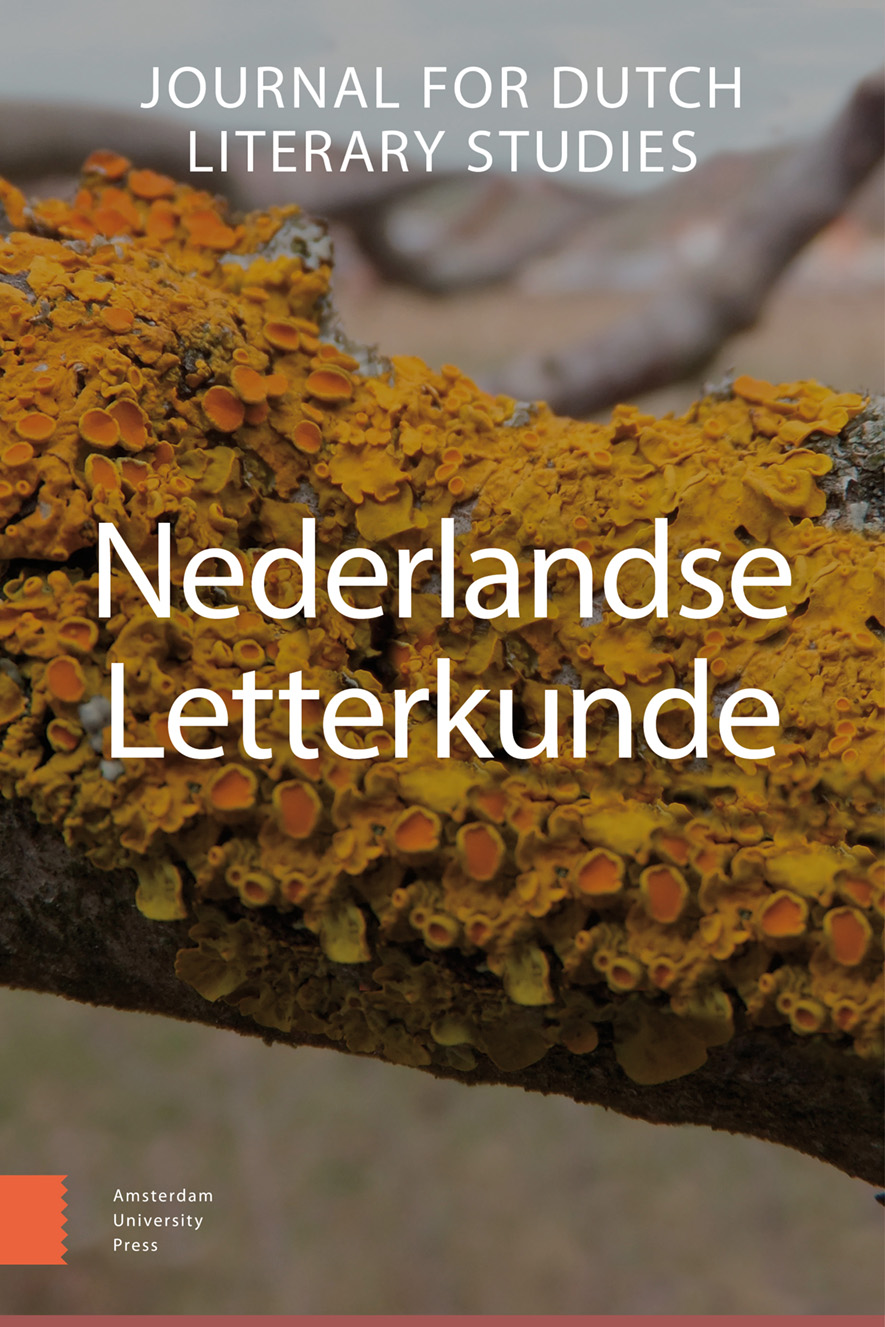-
oa ‘[H]et dier in al zijn toonaarden’ - Over zoöpoëticale configuraties in Charlotte Mutsaers’ beeldend en literair werk
- Amsterdam University Press
- Source: Nederlandse Letterkunde, Volume 19, Issue 1, May 2014, p. 67 - 87
Abstract
This article aims to highlight the prominent place and role of the animal in the literary and visual work of the Dutch writer and artist Charlotte Mutsaers (1942-). The border-crossing between human and animal will be dealt with on the basis of the interaction between image and text in Mutsaers’s oeuvre. In this intermedial perspective, I first focus on three images of Mutsaers’s visual work exemplifying the human-animal masquerade. Secondly, I consider her novel Koetsier Herfst (2008) in which the animal also enacts a crucial function through the figurative and performative force of Mutsaers’s writing. Recent research in the field of Cultural and Literary Animal Studies (CLAS) and ethico-philosophical reflections are used as theoretical frame. Starting from Steve Baker’s ‘representational strategies’ (1993) of the animal (i.e. theriomorphism and therianthropism) and Gilles Deleuze’s theory on the ‘becoming-animal’, this article sheds new light on the subversive functions and non-restrictive meaning of the animal in Mutsaers’s artistic practice in the broadest sense of the word. The analysed figurative strategies in Mutsaers’s work bring a significant reversal of perspective to light: from the human to the animal.


